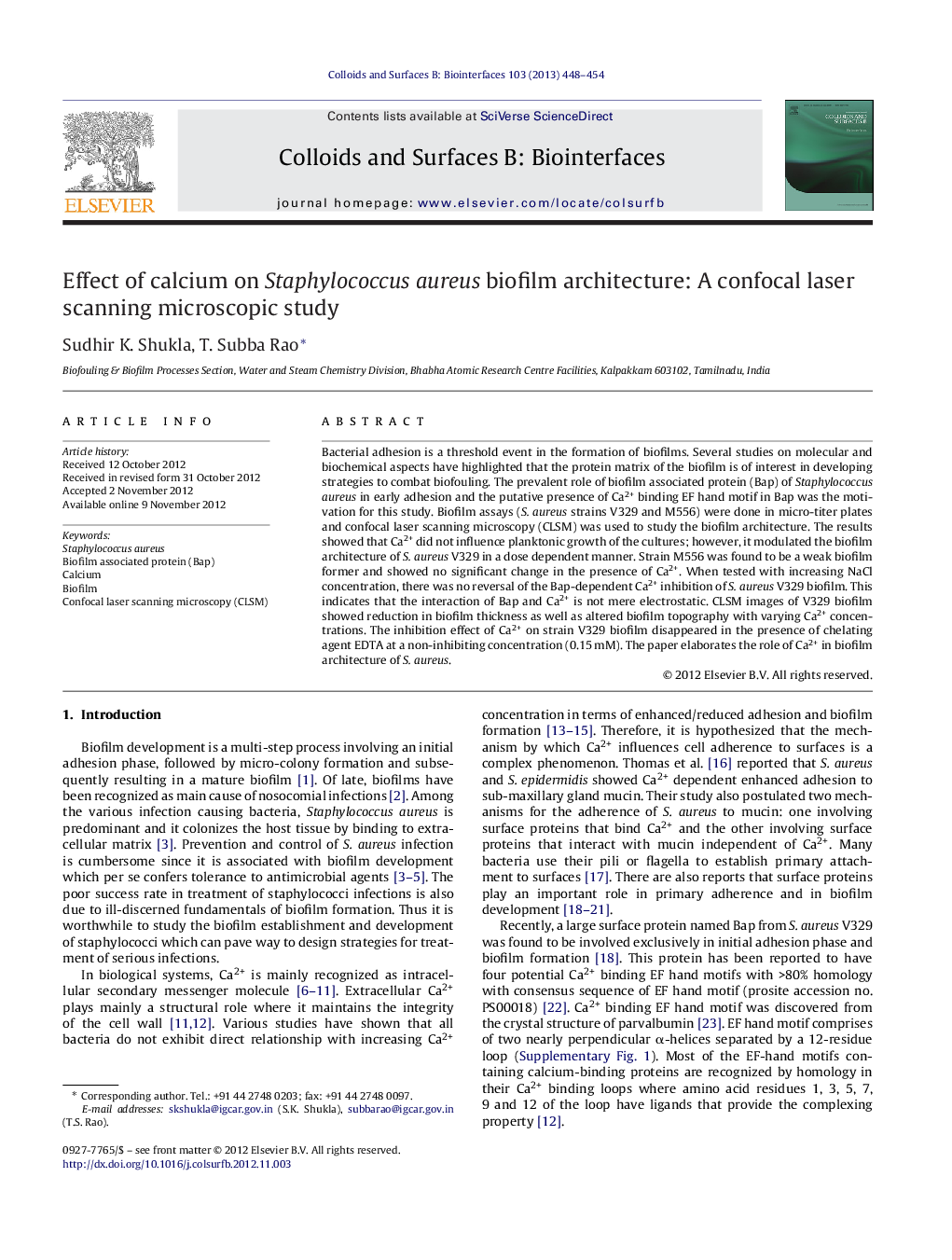| Article ID | Journal | Published Year | Pages | File Type |
|---|---|---|---|---|
| 600379 | Colloids and Surfaces B: Biointerfaces | 2013 | 7 Pages |
Bacterial adhesion is a threshold event in the formation of biofilms. Several studies on molecular and biochemical aspects have highlighted that the protein matrix of the biofilm is of interest in developing strategies to combat biofouling. The prevalent role of biofilm associated protein (Bap) of Staphylococcus aureus in early adhesion and the putative presence of Ca2+ binding EF hand motif in Bap was the motivation for this study. Biofilm assays (S. aureus strains V329 and M556) were done in micro-titer plates and confocal laser scanning microscopy (CLSM) was used to study the biofilm architecture. The results showed that Ca2+ did not influence planktonic growth of the cultures; however, it modulated the biofilm architecture of S. aureus V329 in a dose dependent manner. Strain M556 was found to be a weak biofilm former and showed no significant change in the presence of Ca2+. When tested with increasing NaCl concentration, there was no reversal of the Bap-dependent Ca2+ inhibition of S. aureus V329 biofilm. This indicates that the interaction of Bap and Ca2+ is not mere electrostatic. CLSM images of V329 biofilm showed reduction in biofilm thickness as well as altered biofilm topography with varying Ca2+ concentrations. The inhibition effect of Ca2+ on strain V329 biofilm disappeared in the presence of chelating agent EDTA at a non-inhibiting concentration (0.15 mM). The paper elaborates the role of Ca2+ in biofilm architecture of S. aureus.
Graphical abstractFigure optionsDownload full-size imageDownload as PowerPoint slideHighlights► In this study, bap-positive Staphylococcus aureus strain V329 and bap-isogenic mutant M556 were used and confocal laser scanning microscopy (CLSM) was used to study the biofilm architecture in the presence of Ca2+. ► The data infers that Ca2+ did not influence planktonic growth of the cultures; however, it modulated the biofilm architecture of S. aureus V329. ► Increasing NaCl concentration did not reverse the Bap-dependent Ca2+ inhibition of S. aureus V329 biofilm and also indicates that the interaction of Bap and Ca2+ is not electrostatic in nature. ► CLSM images of V329 biofilm showed reduction in biofilm thickness as well as altered biofilm topography with varying Ca2+ concentrations. The inhibition effect of Ca2+ on strain V329 biofilm disappeared in the presence of chelating agent EDTA.
